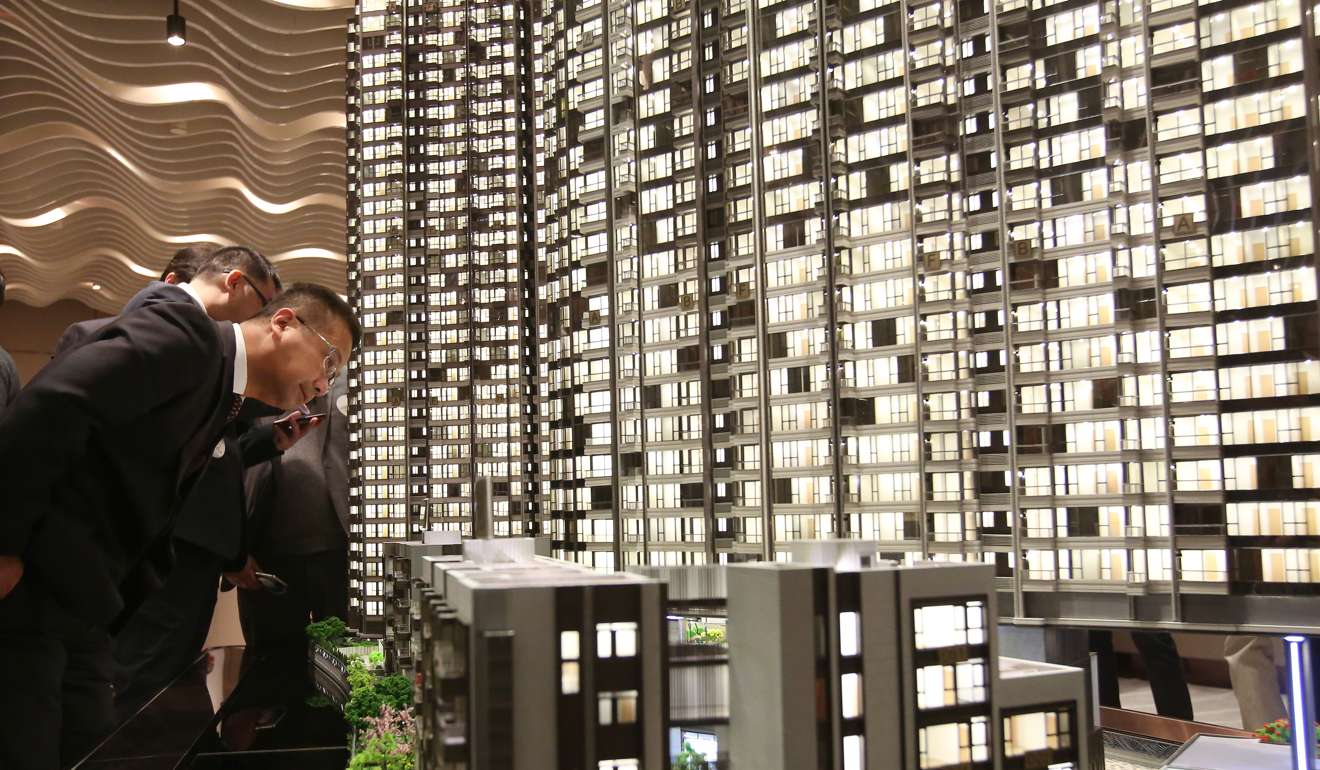
Rise of the 215 sq ft home as Hong Kong price boom squeezes buyers
Developers are building more micro-flats in the city and fewer apartments of 735 sq ft and above – and the trend is likely to continue
Developers in Hong Kong have built more micro-flats – 215 sq ft or below – in the past four years than any other sized homes, according to official figures, and the trend is likely to continue.
The number of private flats under 215 sq ft catapulted from 81 in 2013 to 206 last year, according to the Rating and Valuation Department – an increase of 154 per cent. No flats of that size were built in 2012.
The number of flats ranging from 215 to 429 sq ft shot up 147 per cent from 1,511 in 2012 to 3,731 last year. Medium-sized flats, 429 to 752 sq ft, increased by 59 per cent.
In contrast, there was an 18 per cent drop in apartments measuring between 735 and 1,075 sq ft, and 27 per cent fewer flats of between 1,076 and 1,721 sq ft in the same period.
Analysts say a key reason for developers downsizing is the issue of affordability amid a perennial shortage of living space and strong demand to get on the housing ladder.

A 430 sq ft apartment in Kowloon that sold for HK$2.9 million in 2012, now costs HK$4.8 million, according to the Rating and Valuation Department.
Poon also pointed out that the rise in prices far outpaced the increase in wages. Official figures show the city’s wage index increased by 17 per cent across industries in the past five years, compared with a 38 per cent rise in property prices.
Shrinking household sizes, currently at an average of 2.8 people, and more single people moving out of their parents’ homes were also fuelling demand for tiny flats, Poon said.
In 2011 and 2013, the government included size restrictions in the land sale conditions of several residential sites to boost the supply of small to medium-sized flats.
Denis Ma, head of research at real estate agency Jones Lang LaSalle, said government property cooling measures were another key factor for the city’s shrinking flats.
Developers are building what they believe they can sell in the market
Stamp duty was raised for the second time in three years, to 15 per cent, last November in hopes of curbing speculation and taming soaring real estate prices.
“The higher stamp duty means transaction costs have increased and people have to save up a lot of money for transaction costs and not for the property itself,” Ma said.
“It’s really about budget, and the reality is that not that many people have that much spare change sitting in their back pockets. Developers are building what they believe they can sell in the market.”
Officials forecast that the number of flats being built below 429 sq ft this year will rise to 5,109, which would be triple the number for 2013.
Poon, however, said the phenomenon was not likely to last when prices go down.
“When prices fall to a more affordable level, buyers will want to buy bigger flats, then the demand for micro-flats will fall sharply. This trend will maybe last for around one or two years because property prices are high now.”

